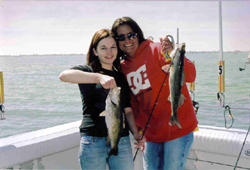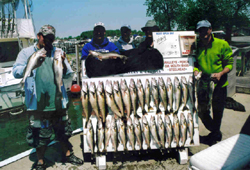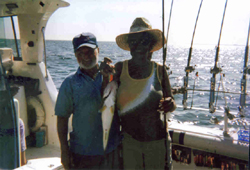|
 Lake Erie is the
eleventh largest lake in the world (by surface area),
and the fourth largest of the Great Lakes in surface
area and the smallest by volume. Lake Erie is the
eleventh largest lake in the world (by surface area),
and the fourth largest of the Great Lakes in surface
area and the smallest by volume.
Ninety-five
percent of Lake Erie's total inflow of water comes via
the Detroit River water from all the "upper lakes" --
Superior, Michigan and Huron -- the St. Clair River,
Lake St. Clair and numerous tributaries. The rest comes
from precipitation. Lake Erie is the shallowest of the
Great Lakes and is especially vulnerable to fluctuating
water levels.
Wind setups (wind pushing
the water from one end of the lake toward the other),
usually from west to east, have produced large short-
term differences in water levels at the eastern and
western ends of the lake, the record being more than 16
ft (4.88 m).
The water provided by Lake
Erie for waterborne commerce, navigation, manufacturing,
and power production has led to intensive industrial
development along its shore, but the basin's moderate
temperatures have also encouraged recreation and
agriculture.
Lake Erie is the warmest and
most biologically productive of the Great Lakes, and the
Lake Erie walleye fishery is widely considered the best
in the world.
Point Pelee National Park in
Lake Erie is the southernmost point on Canada's
mainland.
 |
LENGTH: 241 miles / 388
km
BREADTH: 57 miles / 92 km
AVERAGE
DEPTH: 62 ft. / 19 m.
MAXIMUM DEPTH: 210 ft. /
64 m.
VOLUME: 116 cubic miles / 484 cubic km.
WATER SURFACE AREA: 9,910 sq. miles / 25,700 sq.
km. |
TOTAL DRAINAGE BASIN AREA: 30,140 sq. miles
/ 78,000 sq. km.
DRAINAGE BASIN AREA BY
STATE/PROVINCE:
Indiana: 1300 sq mi; 3300 sq
km
Michigan: 5800 sq mi; 15,100 sq km
New York:
1600 sq mi; 4200 sq km
Ohio: 11,700 sq mi; 30,400 sq
km
Ontario: 8800 sq mi; 22,800 sq km
Pennsylvania:
500 sq mi; 1400 sq km
SHORELINE LENGTH (including
islands): 871 miles / 1,402 km.
 ELEVATION: 569
ft. / 173 m. ELEVATION: 569
ft. / 173 m.
OUTLET: Niagara River and Welland
Canal
RETENTION/REPLACEMENT TIME: 2.6 years
(shortest of the Great Lakes)
NAME: The greater
part of its southern shore was at one time occupied by
the Eries, a tribe of Indians from which the lake
derived its name. This name is always mentioned by the
early French writers as meaning "cat"; Lac du Chat means
"Lake of the Cat." Many attribute this reference to the
wild cat or panther.
References: Great
Lakes Atlas, 1995, Environment Canada and U.S.
Environmental Protection Agency Lake Erie brochure,
1990, Michigan Sea Grant
Double Your Money Back
Guarantee!*
*Get the details
from Captain Gary
216.346.2654 |